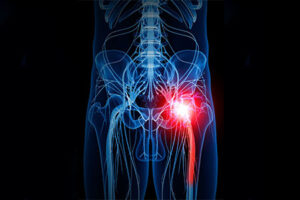
Sciatica, Herniated Disc ( Slipped Disc Treatment in Siliguri )
Sciatica( Slipped Disc Treatment in Siliguri ), also known as lumbar radiculopathy, is a condition characterized by pain that radiates along the path of the sciatic nerve, which runs from your lower back down through your hips, buttocks, and legs. This condition is often caused by a herniated disc, also referred to as a slipped disc. Here are some details on the treatment options for sciatica caused by a herniated disc:
 Conservative Treatments:
Conservative Treatments:
Rest: In many cases, rest can help reduce inflammation and alleviate pain. You may be advised to avoid activities that worsen your symptoms.
Physical Therapy: A physical therapist can teach you exercises to improve your posture, strengthen the back and abdominal muscles, and promote better body mechanics.
Pain Medication: Over-the-counter or prescription medications, such as non-steroidal anti-inflammatory drugs (NSAIDs) and muscle relaxants, can help manage pain and inflammation.
Heat and Ice: Applying heat or cold packs to the affected area can provide relief from pain and reduce inflammation.
Epidural Steroid Injections:
In some cases, corticosteroid injections into the epidural space around the spinal cord can help reduce inflammation and alleviate pain. These injections are often used when conservative treatments do not provide adequate relief.
Chiropractic Care( Slipped Disc Treatment in Siliguri ):
Chiropractors may use spinal adjustments and other techniques to relieve pressure on the sciatic nerve and reduce pain.
Acupuncture:
Acupuncture involves inserting fine needles into specific points on the body to alleviate pain and promote healing.
Surgery:
If conservative treatments do not effectively manage the pain or if there are significant neurological deficits (such as muscle weakness or loss of bladder control), surgical intervention may be necessary. Common surgical procedures for herniated discs include:
Microdiscectomy: This minimally invasive surgery removes the portion of the herniated disc that is pressing on the nerve.
Laminectomy: In this procedure, the lamina (the bony arch of the spinal canal) is removed to relieve pressure on the nerve.
Spinal Fusion: In some cases, spinal fusion may be necessary to stabilize the spine after the removal of the damaged disc.
Lifestyle Changes:
Maintaining a healthy lifestyle by managing your weight, staying physically active, and practicing good posture can help prevent future episodes of sciatica.
Alternative Therapies:
Some individuals find relief through alternative therapies such as yoga, Pilates, and massage.
It’s important to note that the choice of treatment depends on the severity of the condition, the individual’s overall health, and the specific circumstances of the herniated disc. Always consult with a healthcare professional to determine the most appropriate treatment plan for your situation. Additionally, any surgical procedures should be discussed thoroughly with a qualified spine surgeon or neurosurgeon.
